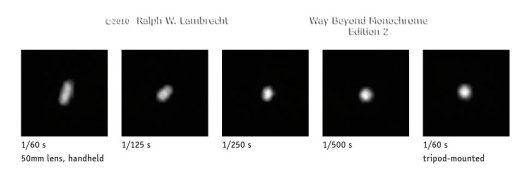hoffy
Member
Howdy all,
When I first took up photography, I was always told a quick rule of thumb dealing with shutter speed and camera shake, for 35mm.
"If you were to set the minimum shutter speed to be the same as the focal length, you shouldn't be effected by camera shake"
So, if I had a 50mm lens on, I should be able to readily hand hold @ 1/50th. For me, I have generally found this works quite well (OK, I can probably hand hold a bit slower). Do others use this rule, or is it total bunk. If others do, how would you apply this to say, 6x7 Medium Format?
Cheers
When I first took up photography, I was always told a quick rule of thumb dealing with shutter speed and camera shake, for 35mm.
"If you were to set the minimum shutter speed to be the same as the focal length, you shouldn't be effected by camera shake"
So, if I had a 50mm lens on, I should be able to readily hand hold @ 1/50th. For me, I have generally found this works quite well (OK, I can probably hand hold a bit slower). Do others use this rule, or is it total bunk. If others do, how would you apply this to say, 6x7 Medium Format?
Cheers






